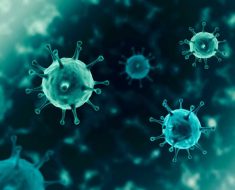
Despite years of skin cancer warnings, Australia continues to hold the unenviable record for the highest melanoma rates in the world, a disease that is almost universally fatal if it spreads to other organs.
More than 16,000 Australians will receive a melanoma diagnosis by year’s end. For 40 percent of people with newly diagnosed melanomas, their chances of survival will be markedly poorer due to a nasty little protein on the cancer cells that is accelerating the disease.
University of South Australia researchers from the Centre for Cancer Biology are now on a mission to learn more about this protein (desmoglein-2) that they have discovered and why melanoma patients are two and a half times more likely to die within 10 years if they express it.
But they need the public’s help.
Lead researcher Professor Claudine Bonder says initial lab work has identified the protein, DSG-2, and how to block it using nanotechnology.
“By injecting a cancer cell-seeking molecule intravenously, we can find the melanoma cells with high levels of DSG-2 and attack them, reducing their severity,” Prof Bonder says. “We already know that in people with lower levels of this protein, the melanoma does not grow as quickly, and we have a better chance of arresting it.”
Prof Bonder’s team is hoping that financial support from the community will help further their research into new treatments for melanoma, including the nanotechnology work and improved methods to detect the aggressive protein.
“We’re confident that we can identify the sub-group of patients that have elevated expressions of DSG-2 on their cancer cells. We’re also confident that we can block this protein on the melanoma, giving patients a better outcome.”
Globally, melanoma cases have increased by nearly 50 percent in the past decade, topping 300,000 people.
And while 95 percent of melanomas are caused by unprotected sun exposure, there are other risk factors at play.
A family history can increase your risk of melanoma, as can fair skin, a weakened immune system, and having many, or unusual, moles.
“Melanoma doesn’t just appear on the sun-exposed skin either,” Prof Bonder says. “Melanoma can appear in the eye, nose, mouth, and genitals. What we do know is once it spreads beyond the skin into vital organs such as our lung, liver or brain, it is almost always fatal.”
Researchers are hoping to raise funding towards pre-clinical laboratory work into early detection and more advanced treatment options for melanoma.
For 78-year-old SA resident Ian Dempster, a melanoma diagnosis in 2014 led to years of surgery, drug infusions, radiotherapy and finally, remission.
Ian admits he is one of the ‘lucky ones’, particularly given his melanoma was already well advanced (Stage 4) when a biopsy on a spot on his left cheek proved malignant.
“I was initially misdiagnosed, but I went back to the doctor after six months as I was really concerned the spot was changing shape. Within a week of the biopsy, I had the first of numerous surgeries,” Ian says.
Over two years, Ian had 35 intravenous infusions of the melanoma drug Keytruda and lost a portion of his left cheek, replaced in a skin graft from his wrist.
A childhood of endless hot summer holidays on Kangaroo Island, working on a farm and playing a lot of sport has come with a price and Ian is keen to prevent others from making the same mistakes.
“Wear a hat, wear sunscreen, cover up as best you can, and just be aware of any suspicious moles or skin lesions and get them looked at immediately,” he says.
Source: Read Full Article





